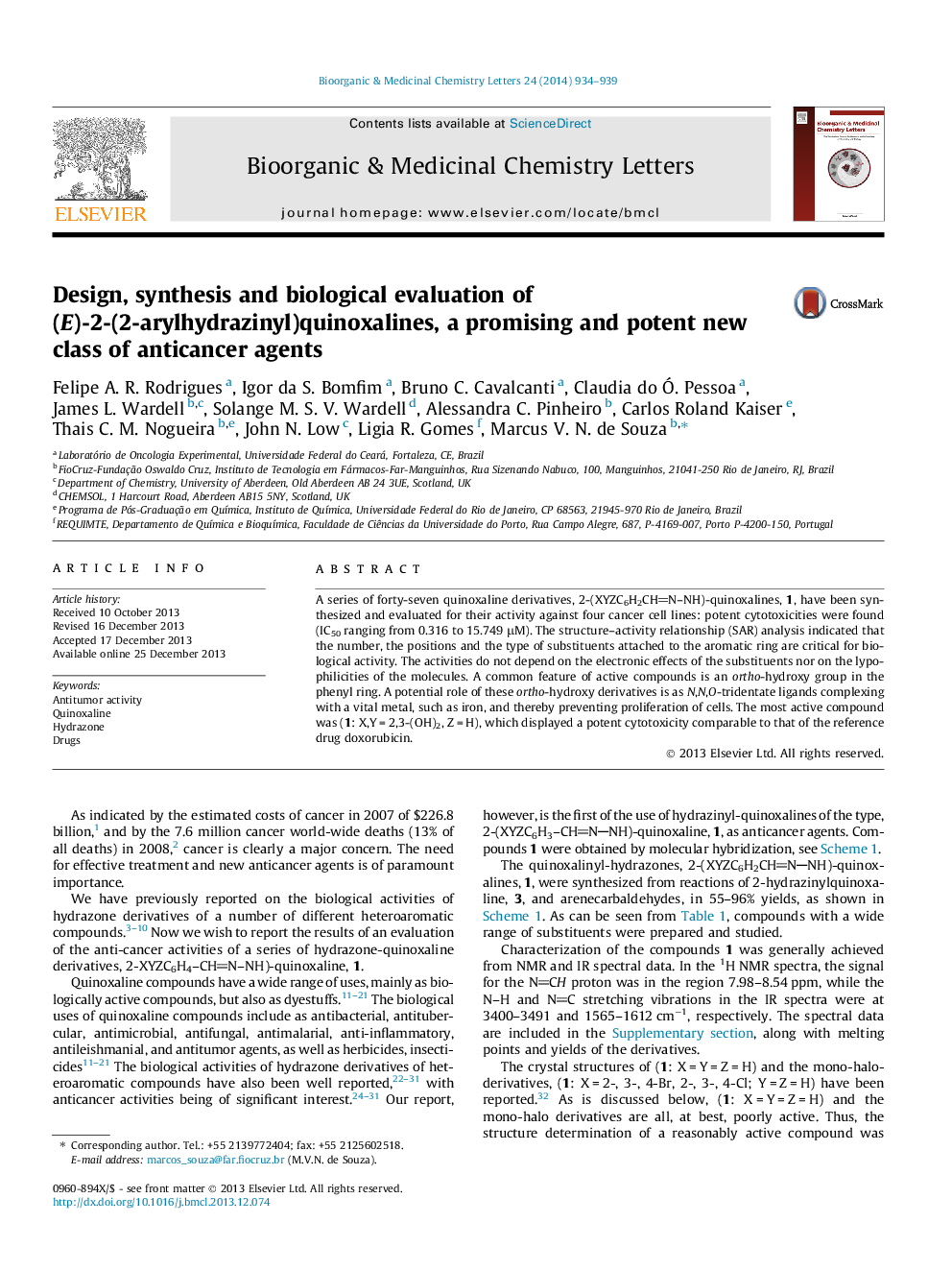| Article ID | Journal | Published Year | Pages | File Type |
|---|---|---|---|---|
| 10594874 | Bioorganic & Medicinal Chemistry Letters | 2014 | 6 Pages |
Abstract
A series of forty-seven quinoxaline derivatives, 2-(XYZC6H2CHN-NH)-quinoxalines, 1, have been synthesized and evaluated for their activity against four cancer cell lines: potent cytotoxicities were found (IC50 ranging from 0.316 to 15.749 μM). The structure-activity relationship (SAR) analysis indicated that the number, the positions and the type of substituents attached to the aromatic ring are critical for biological activity. The activities do not depend on the electronic effects of the substituents nor on the lypophilicities of the molecules. A common feature of active compounds is an ortho-hydroxy group in the phenyl ring. A potential role of these ortho-hydroxy derivatives is as N,N,O-tridentate ligands complexing with a vital metal, such as iron, and thereby preventing proliferation of cells. The most active compound was (1: X,Y = 2,3-(OH)2, Z = H), which displayed a potent cytotoxicity comparable to that of the reference drug doxorubicin.
Related Topics
Physical Sciences and Engineering
Chemistry
Organic Chemistry
Authors
Felipe A.R. Rodrigues, Igor da S. Bomfim, Bruno C. Cavalcanti, Claudia do Ã. Pessoa, James L. Wardell, Solange M.S.V. Wardell, Alessandra C. Pinheiro, Carlos Roland Kaiser, Thais C.M. Nogueira, John N. Low, Ligia R. Gomes, Marcus V.N. de Souza,
